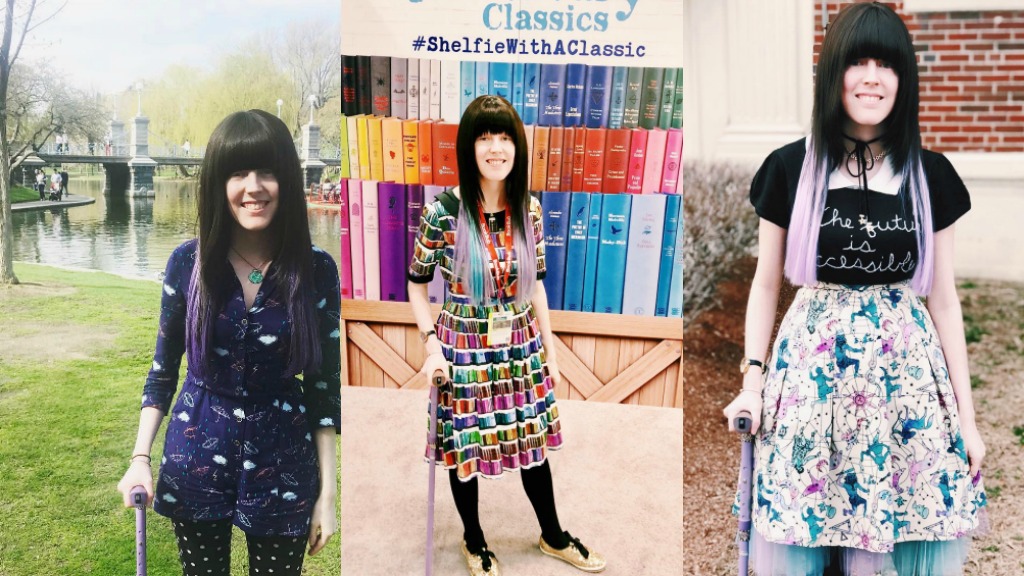What I Wish People Knew About Being a Young Cane User
Although Ehlers-Danlos syndrome, the genetic connective tissue disorder I have, is lifelong, my symptoms have varied throughout my life. I started using a cane in August or September 2016 to help with balance, stability, stamina, and chronic pain. I don’t use my cane all the time, only when I feel I need it, and I generally take it with me for longer trips or outings where I know I’ll be away from home for many hours at a time.
Here’s what I wish people knew about what it’s like to be a young cane user:
I do actually need my cane.
- It’s not for fashion and it isn’t a part of a costume.
- Many people who use canes (or wheelchairs or other mobility aids) don’t need them full-time. If you see me with my cane one day and without it the next, it doesn’t mean that I’m “cured” or “better.” I’ll have this disability for the rest of my life.
- There are different reasons I may be using my cane, and those reasons are different from other cane users. One day I may be using it because I’m exhausted and in pain, and another day it might be for balance.
- If I take my cane out or put it away, it doesn’t mean I’m “faking it,” either. I don’t use my cane all the time and often carry a small backpack to keep it in when I’m not using it. It’s also more difficult to use a cane in some situations—when there’s ice on the ground, on cobblestones, or when I need both my hands to carry something.
If you want to ask questions, please be respectful.
- If I don’t know you, I may not be comfortable explaining to you why I use a cane or the details of my disability. It depends how polite you are and how I’m feeling that day. You can ask (nicely), but don’t expect the answers you’re looking for.
- People do sometimes stare at me and ask me questions (like “Why do you use a cane?” or “Did you break your foot?”). If you’re out with me and I have my cane, you may notice it. It’s partly because we don’t have enough awareness or representation of younger cane users as a society. Do your part to make sure you’re part of the solution—advocate for inclusive media representation.
- I don’t have a cane with a sword in it, or any other kind of weapon, but I have seen them at Renaissance faires and I think they’re cool. Mine needs to be lightweight and foldable for my needs, so I probably won’t buy one anytime soon. Same goes for heavy, serious canes with lions or skulls on top.
My needs vary from day-to-day.
- I may not always need a seat (on public transportation, at an event, at a park, and so on) but it’s appreciated when people offer or just simply don’t take the seats if they don’t need them so I can make that choice.
- Please do give me some space if you see me coming, especially if we’re in a crowded area. It’s easy for me to accidentally trip people with my cane if they don’t see me coming and I can’t get out of their way in time.
- If I’m coming up or down the stairs or an escalator, likewise, don’t stay in my lane and try and make me let go of the handrail and go around you. This can be really dangerous and even impossible for me to do.
- I might walk slower than the pace you’re used to, whether I have my cane with me or not. If I’m walking slowly in an area with heavy foot traffic, I try and stay out of other people’s way. All I ask is that you do the same, and have some patience with people who are walking slowly in public. Instead of getting angry with us, just go around us and move on with your day.
My disability will always be a part of my life.
- I’m proud of my cane. I don’t necessarily want it cropped out of photos or hidden from view. I’m also proud of my disability and both are part of who I am.
- I appreciate it when people make an effort to learn about Ehlers-Danlos syndrome (and I think most cane users can say the same of their disabilities) and do their own research. It’s okay to ask me about how it impacts my life, because it’s different for everyone, but knowing that someone put in the effort to learn more means a lot.
I’m a cane user, and while it doesn’t define my life, it is a big part of who I am and how I experience the world. I love it most when people take me as I am and love me for it, and show up with empathy and compassion for both the experiences we don’t share and the ones we do.
About Rooted In Rights
Rooted in Rights exists to amplify the perspectives of the disability community. Blog posts and storyteller videos that we publish and content we re-share on social media do not necessarily reflect the opinions or values of Rooted in Rights nor indicate an endorsement of a program or service by Rooted in Rights. We respect and aim to reflect the diversity of opinions and experiences of the disability community. Rooted in Rights seeks to highlight discussions, not direct them. Learn more about Rooted In Rights




So very glad to read this wonderful young woman’s notes about having a cane with EDS. My granddaughter is also working with her FINALLY diagnosed EDS and doing well. I shared this article with her.
My good friend has eds and uses a cane. I have had arthritis (juvenile) ever since i was a teen (much older now!) and use a cane. We are quite the pair when we’re out about town together, and yea, just this afternoon we were going to our table at a restaurant and a woman and her two kids were staring at us HARD. My friend said, “I feel like we should break out in a song and dance.”
My Mom had MS (multiple sclerious) and am going in that direction as well. Most of the time I can get by OK – but a lot slower. MS is a horrible disease. You don’t know if you are walking today or not! But you learn to always be prepared for anything. Just a simple “bump” from someone in a store, can drop you to the floor. Not only does it hurt – but can be embarrassing! The worst part is – it sneaks upon you! You become uncoordinated and start fumbling and tripping and a lot of people think the worst.